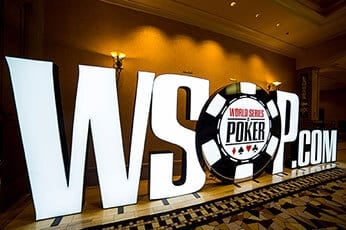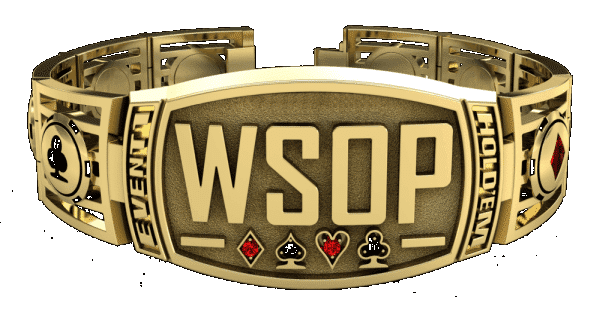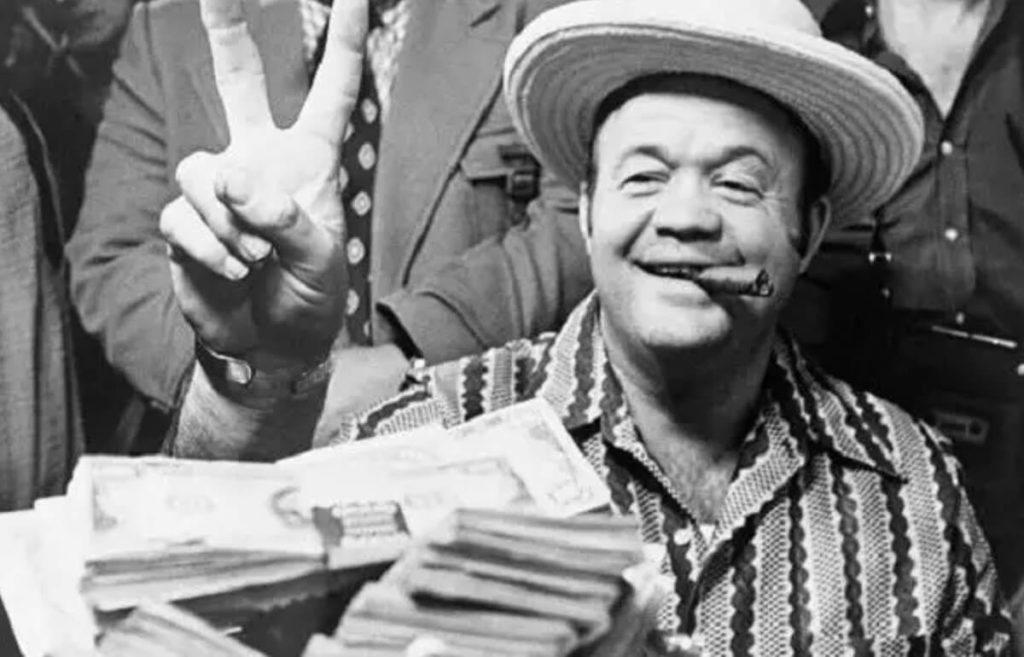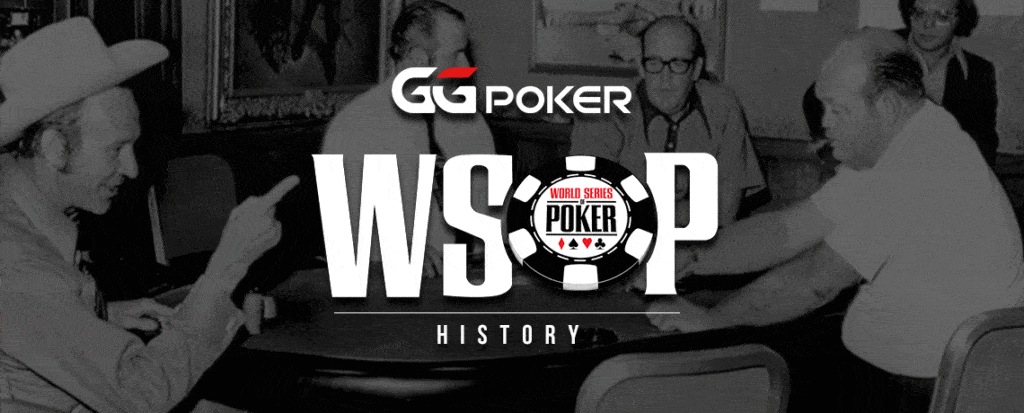The Story of the 1973 WSOP Main Event
The early years of the World Series of Poker Main Event were a drama in their own right. The world’s biggest poker event, today populated by over 10,000 players in a single year, saw players vote to determine the winner in 1970. In 1971, six players played in the first No Limit Hold’em world championship tournament, with Johnny Moss winning, capturing his second title in a row.
In 1972, controversy reigned as Amarillo Slim walked away with only $15,000 of the $80,000 prize pool. After a deal involving Doyle Brunson and Puggy Pearson; however, Amarillo Slim was allowed to win by his opponents and became a propulsive winner, bringing poker to national attention on TV.
In 1973, the WSOP Main Event was set to be bigger than ever before.
Six Preliminary Events Kick Off the Action
The biggest difference in proceedings for the 1973 edition of the World Series of Poker was the schedule. Expanding from two events to eight, directly resulted in the Championship ‘Main Event’ field growing from eight to 13. Following Amarillo Slim’s TV appearances, CBS Sports broadcast highlights of the WSOP Main Event for the first time, bringing poker to a national television audience.
The fourth official World Series of Poker began on May 11th with a $4,000-entry Limit Seven-Card Stud event. This event was won by Puggy Pearson. A record was set in Event #2 when Joe Bernstein won $21,000 in the ‘Winner Take All’ Limit Ace-to-Five Draw event. Winning the event, he set the record for the oldest-ever winner of a WSOP bracelet, a record he held until 1981 when… but that story is for later.
Bill Boyd had no takers for the $10,000 Limit Five-Card Stud event in 1973, the event was to have served as a big draw lead up before the Championship. Having won both the 1971 and 1972 events in the same format, finding opponents for this master of the game was, in a word, tough. Instead, a $1,000 buy-in No Limit hold’em acted as a precursor to the Main Event. In modern parlance, it would be called a ‘Mini Main Event’ and with 17 entries, was the heaviest populated event of the 1973 series. Won by Puggy Pearson for his second title of the week, it was followed by a No Limit 2-7 Draw event. This was chopped up after a 20-hour heads-up battle was brought to an end by the exhausted participants, Jack ‘Treetop’ Straus and Aubrey Day, each of whom took home $16,500.
The well known newspaper The New York Times reported the epic duel in the morning.
“The two men [Aubrey Day and Jack Straus] finally decided to call it a tie at 9 a.m. yesterday morning after about 20 hours of head-to‐head play so that Straus could get some sleep before going into the [Main Event].”
The last event to take place before the Main Event was a Limit Razz event which carried a $4,000 buy-in. The was won by first-time WSOP event winner Sam Angel, who took home the $32,000 prize. Technically, thanks to Doyle Brunson and Puggy Pearson chopping up the prizepool of the 1972 Main Event with Amarillo Slim, this represented the biggest prize won at the World Series of Poker so far.
All of that was to change when the biggest Main Event yet took place a day later.

The Main Event Begins
With CBS cameras rolling and lights shining on the 13 players taking part, the 1972 WSOP Main Event began. With each player paying the now traditional $10,000, this year did not see Benny Binion put up half of the entry fee, with each player fully invested in themselves. Before the match, Jack Straus was spotted drinking milk and reporters asked how he felt after such a long heads-up battle so close to the big one.
“Feeling great and ready to play,” he told them. “The only problem is I lost my glasses. Got propositioned from the rail last night and couldn’t even read the damn note.” That person made themselves known and asked Straus if he’d take five to one on himself.
“I’m feeling pretty worn out,” he replied. “Give me maybe 12 or 15.”
Players were ready to bet on anything in the early 1970s and Straus started the action as a 9/2 favorite to win. Asked why, he put it down to location.
“I learned how to play from my daddy and [I’ve] been playing cards since I was six or seven, just like the rest of these Texas boys.”
Running an unofficial ‘book’, Jimmy the Greek was sure that the first man out would be the quiet pawnbroker Sherman Lanier, and he was right. It was Lanier’s first visit to Binion’s and the New Orleans man was chewed up and spat out.
Play continued, and as time passed, it got closer to the edge, the realm where players are essentially forced to commit all of their chips.
The first to do so was ‘Treetop’ himself. Straus survived the all-in but states he isn’t happy with the table break, putting him among some of the toughest players in the room.
“They ought to figure up a way to seed ’em, like in tennis or something,” he said. “That table of mine is about twice as tough as that other one.”

The Reigning Champion Departs to Treetop’s Hearts
There was a shock when the reigning champion, Amarillo Slim, busted to Straus’ heart flush.
“Oh, them cold, cold hearts,” remarked Slim, Soon after, he joined on the rail by the man who withdrew his interest in winning the Main Event the previous year when the TV cameras turned up – Doyle Brunson.
Brunson busted in 11th place, a long way from the final table. Brunson, who the previous year had been unwilling to fight for the title when play became three-handed, taking a deal to depart before Slim was ‘elected’ the winner, could do nothing about his exit this time. Followed from the felt by Bobby ‘The Wizard’ Hoff, a Californian former poker dealer, Crandell Addington and Roger Van Ausdall, just seven remained when Jimmy Casella was busted. That left a final table of six players, all of whom had a great chance of winning the $130,000 top prize.
Puggy Takes the Prize
Brian ‘Sailor’ Roberts was ousted in sixth place, and after Bob Hooks busted in fifth place, Day 2 ended with just four players still alive with a chance of becoming world champion. Puggy Pearson held the lead, with one of the dealers saying, “These men don’t play off of the cards so much as off each other.”
First out on the final day was Bobby Brazil, who busted when Pearson had a set of jacks to Brazil’s pair of them. Play went all day three-handed, to the point where midnight came around and still Jack Straus, Johnny Moss and Pearson, possibly the most recognizable trio in poker, were still fighting for the win.
Jack Straus, sitting 4 cards to a flush on the turn, had his tournament life on the line against Johnny Moss. Moss meanwhile, was trying to buy insurance from Benny Binion at odds of 3 to 2, just in case. Unfortunately, this was not the year for Treetop as the river ran dry and he was KO’ed by The Grand Ol Man of Poker. With Strauss out, for the second year in a row, Pearson was playing heads-up for the Main Event championship.
One year on from actively conceding the title to Amarillo Slim, Pearson now had the chance to put that right. To do so, he’d have to beat the two-time world champion Moss. When a crucial pot went his way, Pearson called to Amarillo Slim who was sitting on the rail.
“This reminds me of last year when you beat me with two pair, kings and sixes.”
Moss lost with pocket queens against Pearson’s kings and sixes.
“Called that one, didn’t ya, Puggy?” laughed Slim.
In the final hand, with all of their chips already in the middle, Moss needed to hit. In the end, Pearson’s ace-high was good enough to win as both men missed draws. Upon the final community card landing, the gathered crowd cheered, and photos were taken of Pearson, as Benny Binion brought forward the silver trophy and a pile of $100 bills.
With TV cameras capturing some of the action, the WSOP Main Event was now a spectacle as well as a poker game, beamed into American homes. But this was nowhere near the end of the WSOP Main Event’s growth in the decade – in fact, it was just the beginning.

1972 WSOP Main Event 1974 WSOP Main Event
About the Author: Paul Seaton has written about poker for over 10 years, interviewing some of the best players ever to play the game such as Daniel Negreanu, Johnny Chan and Phil Hellmuth. Over the years, Paul has reported live from tournaments such as the World Series of Poker in Las Vegas and the European Poker Tour. He has also written for other poker brands where he was Head of Media, as well as BLUFF magazine, where he was Editor.
